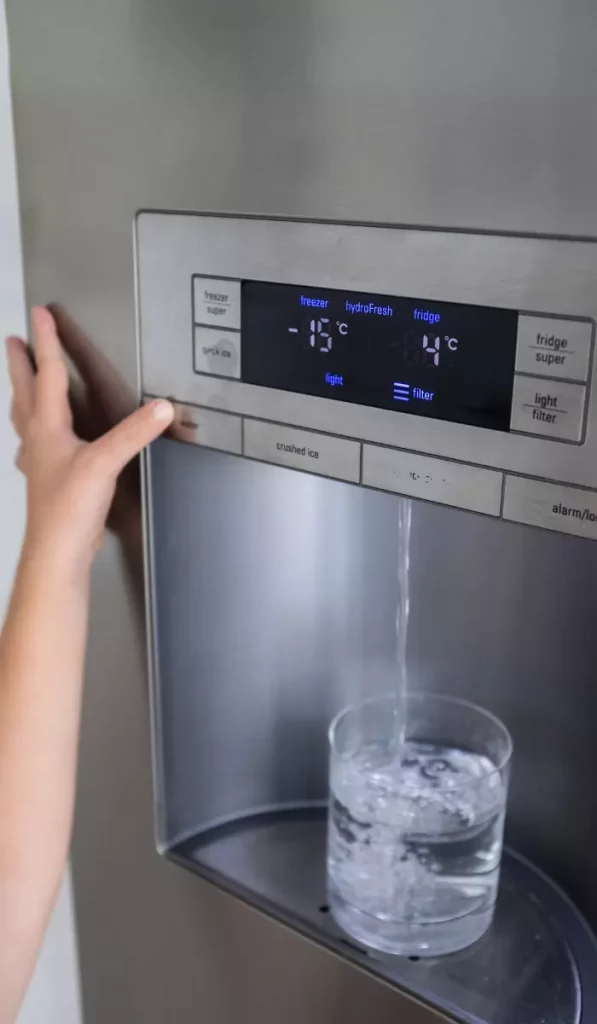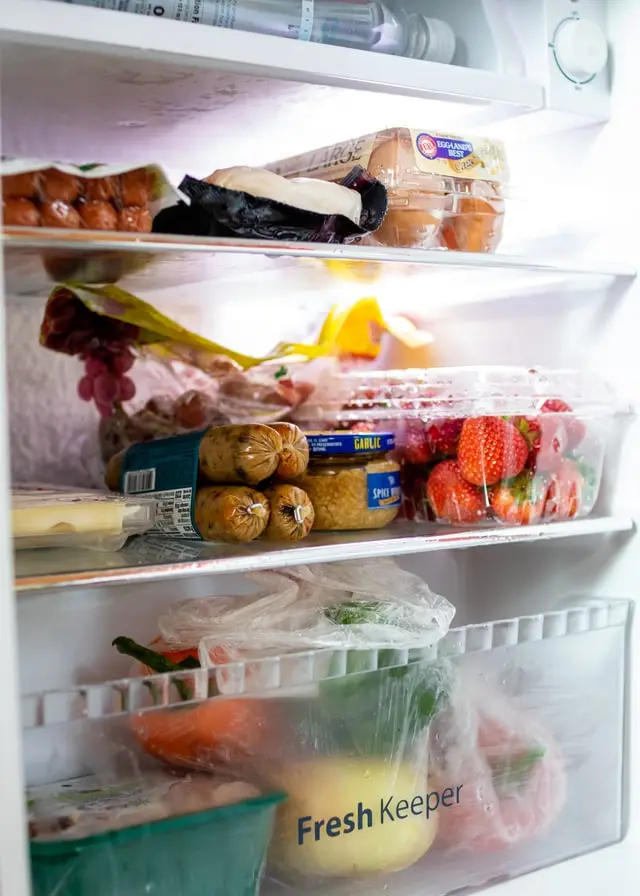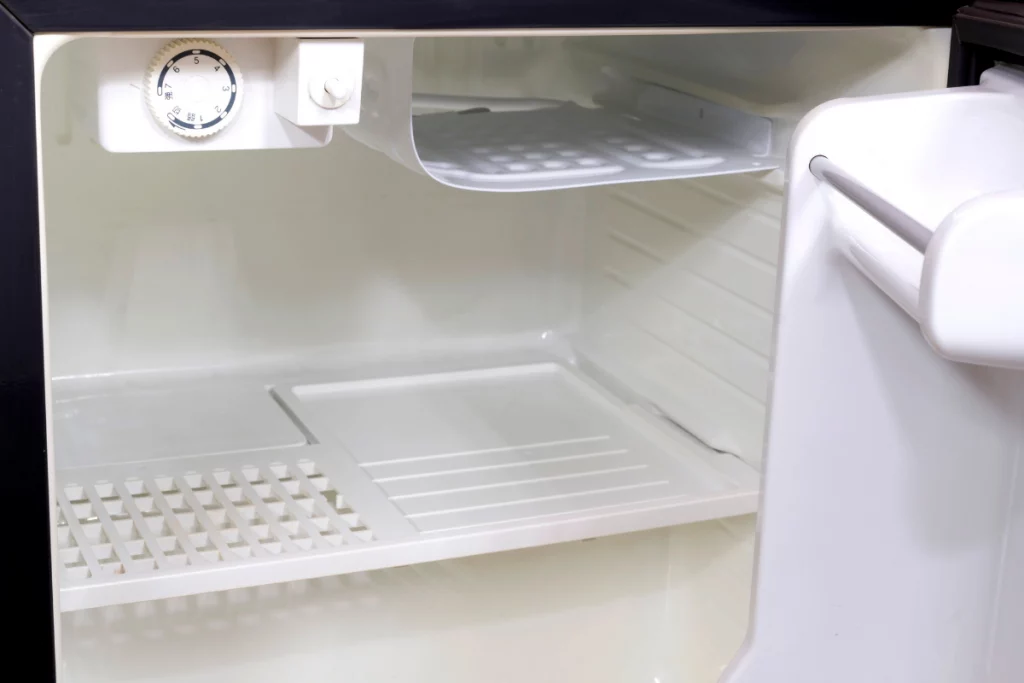Buying a Whirlpool mini fridge is like stepping into the world of sophisticated refrigeration on a compact scale. The first step? Getting familiar with its temperature controls. Whirlpool, with its long-standing reputation in offering top-notch household appliances, doesn’t skimp on ensuring even its mini-fridges boast user-friendliness.
Key Takeaways
- Navigating Controls: Whirlpool mini fridges come with either knobs or digital displays. Settings typically range from 1-7, 1-5, or 1-9, with 1 being the warmest and the highest number the coldest.
- Understanding Temperatures: Maintaining correct temperature isn’t just for taste—it’s essential for safety and food preservation.
- Optimal Settings: Dairy and eggs like it just below 40°F, fresh produce thrives around 40°F-42°F, meats need it colder near 32°F-35°F, and drinks are best around 35°F-38°F.
- Troubleshooting: If the fridge is too cold, check settings and door seals. If it’s not cold enough, avoid overstuffing and clean the coils.
Remember, understanding your Whirlpool mini fridge ensures freshness, safety, and energy savings!

Whirlpool Mini Fridge Temperature Settings
Every Whirlpool mini fridge, regardless of its size or model, features an easily identifiable temperature control. It could be a knob or a modern digital display, but you’ll generally find it within the fridge’s inner compartment. Depending on your specific model, you may encounter a rotating knob with marked numbers, which could range from 1-7, 1-5, or even 1-9. Alternatively, some newer models may flaunt a touch-sensitive digital display for more precise temperature tweaks.
Default Settings vs. Custom Adjustments
Whirlpool often sets its mini fridges at a mid-range default temperature, aiming to accommodate a variety of foods and beverages right from the start. But life isn’t one-size-fits-all. Summer months, a packed fridge, or even a gathering could necessitate some manual adjustments. Understanding what each number stands for can help: typically, the lowest setting (1) is the warmest, and the highest number (be it 5, 7, or 9) is the coldest.
Understanding Temperature Settings
Why all the fuss about temperature settings? Well, it’s not just about having that soda at the perfect chill. It’s a dance between food safety, longevity, taste, and, believe it or not, energy savings.
Importance of Proper Temperature Maintenance
Maintaining the right temperature isn’t just about the culinary experience; it’s predominantly about safety. Every degree matters when it comes to slowing bacterial growth or preventing that leftover pasta from turning sour too soon. Not to mention, the right temperature ensures you don’t inadvertently bite into a frozen apple or pour crystallized milk into your coffee.
How Temperature Affects Food Preservation
It’s a simple but crucial fact: bacteria thrive at warmer temperatures. Keeping your mini fridge below 40°F (4°C) drastically slows down this bacterial party. On the flip side, excessively cold settings might freeze your veggies or dairy. It’s all about that perfect middle ground where food tastes fresh and has an extended shelf life. So with that in mind, let’s look at some:
Optimal Temperature Settings for Different Foods
Given their compact size, you’d be surprised at the versatility of Whirlpool mini-fridges. But it’s not just about space; it’s about using that space smartly.
Safeguarding Dairy and Eggs
For dairy enthusiasts, there’s nothing worse than curdled milk or frozen butter. These products, along with eggs, prefer it cool but not icy. A temperature just below 40°F (4°C) in the main compartment does the trick. And remember, keep them away from the super cold zones adjoining the freezer.
Preserving Fresh Produce
Veggies and fruits, they’re the life of the fridge, right? But they can be finicky. The crisper drawer, with its slightly higher temperature and adjustable humidity, is their haven. Aim for a cozy 40°F-42°F (4°C-5.5°C) to keep them crisp and fresh.
Keeping Meat and Fish Fresh
The stakes (pun intended) are high when storing meats. Their proximity to the freezer section is vital. Think cold, around 32°F-35°F (0°C-1.6°C), to ensure that the steak remains juicy for the weekend BBQ and the fish doesn’t start smelling funny.
Storing Beverages for Optimal Refreshment
The weekend is around the corner, or maybe you’ve had a long day. You reach for that drink, and the last thing you want is lukewarm soda or beer. For drinks, a chilly 35°F-38°F (1.6°C-3.3°C) ensures each sip is a refreshing delight.
Troubleshooting Common Temperature Issues
Even with the trusty Whirlpool brand, every appliance can have its off days. Don’t sweat it; troubleshooting is usually straightforward.
The Mini Fridge Runs Too Cold
Frozen lettuce or crystallized juice? First, double-check that someone hasn’t fiddled with the temperature knob. If settings are as they should be, peek at the door seals. Sometimes, tiny gaps allow warm air in, causing the fridge to work overtime and freeze everything inside.
The Mini Fridge Isn’t Cold Enough
A lukewarm fridge isn’t fun. Overstuffing can be the culprit. Remember, your fridge needs to breathe. Air circulation is essential for maintaining temperature. Another often overlooked factor? The coils. Dusty coils can hinder performance. A quick clean might just be the remedy.
Energy Efficiency and Temperature Management
In a world where being eco-friendly is not just appreciated but essential, knowing how your Whirlpool mini fridge impacts the environment can be enlightening.
The Connection Between Temperature and Energy Use
Going super cold might seem efficient, but did you know for every degree below the recommended setting, energy use can spike by 2%? It’s not just about your electricity bill; it’s about the planet. Don’t overthink it, though.
Tips for Energy-Saving Temperature Settings
If you’re super hyped about maintaining the correct temperatures though, a small investment in a fridge thermometer can be a game-changer. It ensures you’re not cooling more than necessary. Location matters too. Keeping the fridge away from heat sources, like ovens or direct sunlight, helps it run more efficiently. We cover more of these here.
Conclusion
In wrapping up, knowing your Whirlpool mini fridge inside out, quite literally, makes a world of difference. From saving on energy bills to ensuring every meal is as fresh and tasty as it should be, these little temperature tweaks matter. Dive into your user manual, understand your specific model, and embrace the joy of efficient refrigeration!




